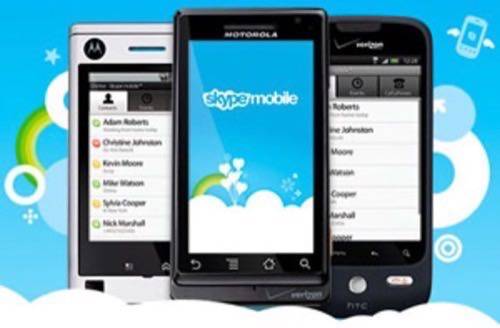The fast-growing population of Android users will soon be able to chat face-to-face thanks to a Skype mobile application that will hit the marketplace with video functionality “later this year.” As reported on the gadget blog Skatter Tech, Skype representatives have been quoted confirming the release of a carrier-independent app that will allow users to use voice and video to chat on their Android devices. This is a giant step forward for Android users who were disappointed to learn earlier this year that Skype’s initial offerings on the platform were restricted to Verizon’s 3G network.

“We’re betting big on video, and we intend to set the bar on mobile video calling, and it’s something we’re going to do this year,” said Skype PR representative Brianna Reynaud. “We will be bringing a direct to consumer app to the Android marketplace later this year. This application will be available for all consumers globally to download regardless of carriers.”
Though it remains to be seen if any other restrictions or limitations will be placed on the app, this news is certainly exciting to Android users. The announcement also comes amidst speculation that Apple’s forthcoming refreshed iPhone will feature a forward-facing camera for video calls. Whether Skype is also working with Apple to launch an iPhone application this year is unknown, and some have suggested that Apple may reserve the functionality for a native iChat application. Either way, a new dawn of mobile video chatting seems to be upon us. The question is, however, will people actually take to this new form of communication?

In 1993, AT&T ran a series of commercials suggesting the breakthrough technologies the company hoped to bring to its customers in the future. The ads include technologies prevalent today, including e-readers, in-car GPS, tablet PCs and even automated toll booth systems like EZ Pass. One innovation featured in the ads that has yet to take off significantly is the idea of video replacing standard phone communication.
Skype chat on the desktop and enterprise video conferencing solutions have become popular in recent years, but they haven’t gone gangbusters and replaced the way we communicate all together. In fact, in the same interview with Skatter Tech, Reynaud said that only one-third of Skype calls are video calls, so the majority of users are simply using the voice functionality.
This is not to say that video-calls on a mobile device shouldn’t have a place in our current technological ecosystem. Video chatting on a phone could be great for special situations, like when a group of friends are getting together and they call up an absent friend and pass the phone around the room. It’s going to take some time for the novelty of mobile video chat to ware off before it finds itself being used more and more as a common means of communication.
We as humans, for better or for worse, have evolved into incredible multi-taskers. We listen to music, watch videos, read stories, check email, update our social status – sometimes all at the same time. Video chatting, from my experience, does not fit in well with a multi-tasker’s mindset. Think of all the things we do while talking on the phone – driving our cars, eating, doing laundry, etc. Now think of trying to do anything else while video chatting; it’s nearly impossible because it requires the majority of your attention.
Will mobile video chatting take off? That still remains to be seen; however, regardless of these assertions, it is good to see Skype expanding its mobile platform to more carriers and devices. I only hope as an iPhone user that video chat from Skype finds its way onto my device sometime soon as well.

















